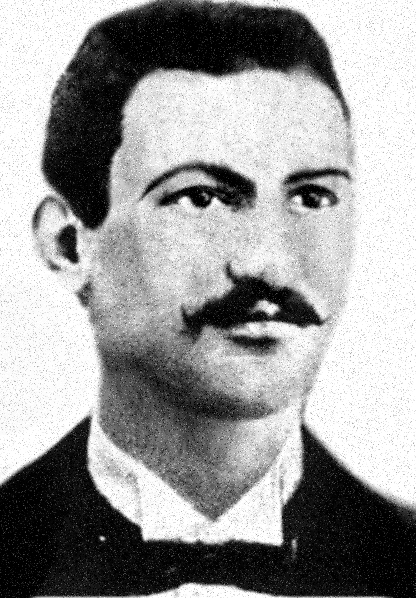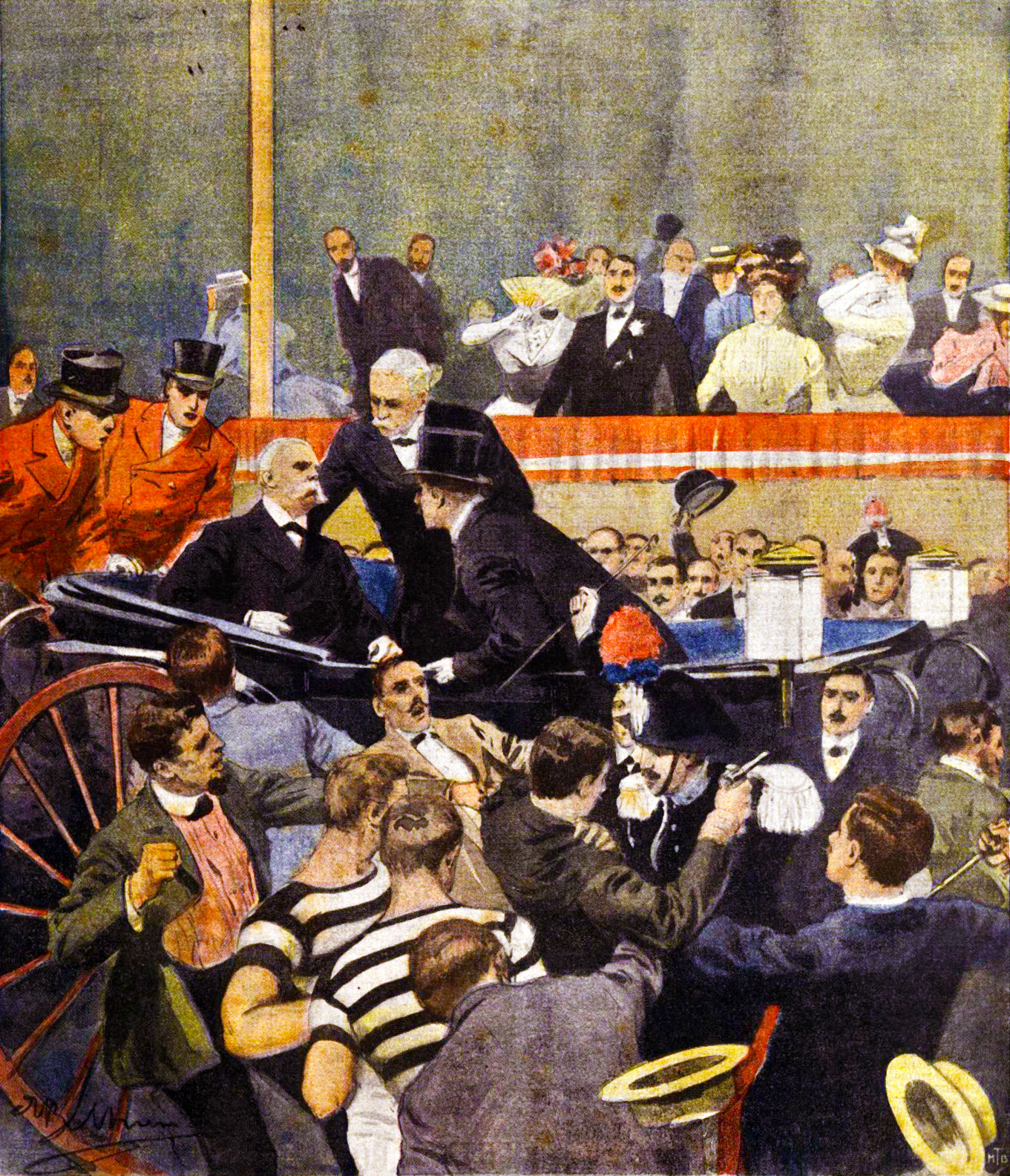by Scott Mehl © Unofficial Royalty 2020
On July 29, 1900, while visiting Monza, Italy, King Umberto I of Italy was shot and killed by Gaetano Bresci, an Italian anarchist claiming to avenge the deaths of people in Milan during the riots of May 1898.
Umberto I, King of Italy

Umberto I, King of Italy – source: Wikipedia
King Umberto I was born in Turin on March 14, 1844, the eldest son of the future King Vittorio Emanuele II of Italy and Archduchess Adelheid of Austria. He married his first cousin, Princess Margherita of Savoy and had one son, later King Vittorio Emanuele II. Umberto became King of Italy upon his father’s death in January 1878 and reigned until his assassination in 1900.
For more information, see Unofficial Royalty: King Umberto I of Italy
The Assassin – Gaetano Bresci

Gaetano Bresci. source: Wikipedia
Gaetano Bresci was born in Prato, Tuscany, in 1869, and later emigrated to the United States. Bresci had been exposed to an anarchist group in Prato and his views continued to evolve while living in the United States. Following the Bava-Beccaris massacre, Bresci became determined to return to Italy and avenge the deaths of so many innocent people. He arrived back in Italy in May 1900, eventually making his way to Monza, where he tracked the movements of King Umberto I of Italy who typically spent his summers at the Royal Villa in Monza, Italy
The Assassination

source: Wikipedia
King Umberto I had already survived two previous assassination attempts, in November 1878 and again in April 1897. Unharmed in both, he would not be so lucky the third time.
In May 1898, workers organized a strike in Milan, protesting the rising food costs in Italy. A peaceful strike turned violent and riots broke out around the city. Umberto’s government brought General Fiorenzo Bava-Beccaris in to help restore order. However, the General ordered his troops to fire on the demonstrators on May 7, 1898, resulting in nearly 100 deaths and several hundred injuries. Further uproar came when King Umberto I honored General Bava-Beccaris the following month, presenting him with the Great Cross of the Order of Savoy.
On the evening of July 29, 1900, King Umberto attended an athletic competition in Monza. Having been the target of previous assassination attempts, he usually wore a protective vest under this coat, but because of the extreme heat, and against the advice of his security team, he chose not to wear it that evening. In the crowd was Gaetano Bresci, an anarchist who was out to avenge the deaths in the Bava-Beccaris massacre. Leaving the athletic competition at around 10:30 pm, King Umberto returned to his carriage for the brief trip back to the Royal Villa of Monza. While he acknowledged the crowd who had come to see him, Bresci came forward and fired four shots. King Umberto was hit three times, in his shoulder, his lung, and his heart. He slumped forward in the carriage, allegedly saying “I think I’m hurt” and lost consciousness. The carriage quickly rushed back to the Royal Villa, where, despite the doctors’ efforts to save his life, King Umberto I died at 11:30 pm.

Tomb of Umberto I at the Pantheon in Rome. photo: By Jastrow – Own work, Public Domain, https://commons.wikimedia.org/w/index.php?curid=1820580
King Umberto’s body was returned to Rome where his funeral and burial took place on August 9. His remains were interred in the Pantheon in Rome, Italy beside his father. King Umberto I would be the last Italian King to be buried in Italy until his son’s remains were later returned to the country in 2017.
photo: By MarkusMark – Own work, CC BY-SA 3.0, https://commons.wikimedia.org/w/index.php?curid=4365063
In honor of his father, Umberto’s son Vittorio Emanuele III, King of Italy had a chapel monument, the Expiatory Chapel of Monza, built on the site where King Umberto was killed. It sits near the entrance to the Royal Villa of Monza and was inaugurated on July 29, 1910, the 10th anniversary of the King’s assassination.
What happened to Gaetano Bresci?
Remains of the Santo Stefano prison. source: Wikipedia CC BY-SA 3.0, https://commons.wikimedia.org/w/index.php?curid=447753
Following the assassination, Gaetano Bresci was quickly subdued and taken into custody by the local police, who likely saved him from being killed by the crowds. He was tried for regicide and as the death penalty had been abolished in Italy years earlier, was sentenced to life in prison.
On May 22, 1901, Bresci was found dead, his lifeless body hanging from the railing in his cell in the Santo Stefano prison. Reportedly, the guard watching him had stepped away for a few minutes and found the body upon his return. Some reports state that he was beaten to death by the guards. The doctor who performed the autopsy wrote that the body was in a state of decomposition, suggesting that he had been dead for more than 48 hours, disputing the official suggestion that he had hanged himself. Bresci’s remains were buried in the prison cemetery.
This article is the intellectual property of Unofficial Royalty and is NOT TO BE COPIED, EDITED, OR POSTED IN ANY FORM ON ANOTHER WEBSITE under any circumstances. It is permissible to use a link that directs to Unofficial Royalty.
